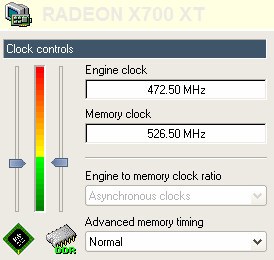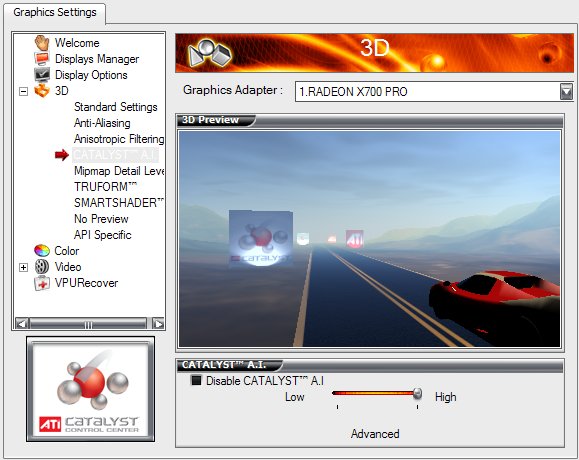System Setup and Notes
X700 XT versus GeForce 6600 GT, head-to-head
Hardware
- ATI Radeon X700 XT Reference Board, RV410, 128MB, PEG16X, 475/1050
- NVIDIA GeForce 6600 GT Reference Board, NV43, 128MB, PEG16X, 500/1000
- NVIDIA GeForce 6800 GT Reference Board, NV45, 256MB, PEG16X, 350/1000
- NVIDIA GeForce FX 5900 PCX Reference Board, NV35, 128MB, PEG16X, 390/700
- Intel Pentium 4 Extreme Edition, 512KB L2, 2MB L3, 3400MHz
- Albatron 915P LGA775 Mainboard, LGA775, DDR400
- 512MB Corsair XMS3200LLPT, 2-2-2-6, DDR400
- Western Digital WD360G Raptor, SATA
Software
- Windows XP Professional w/SP2
- DirectX 9.0c Runtime
- ATI CATALYST 4.9 Release, version 8-06-4-040911a-018053E
- NVIDIA Detonator Release 60 and 65, 61.76, 65.76
- 3DMark 2001SE Build 340
- 3DMark03 v3.4.0
- Call of Duty v1.1.1412
- Unreal Tournament 2003 v2225
- Serious Sam: Second Encounter
- ShaderMark 2.0
- D3D RightMark 1.0.4.9 PB3
- Realtime High Dynamic Range Image-Based Lighting v1.2
- FRAPS 2.1
- TexBench 1.3
- SeriousMagic Benchmark
Notes
The X700 XT goes up against 6600 GT in our reference board tests, with 6800 GT and 5900 PCX (at 5900XT clocks) on PEG16X thrown in for good measure, to highlight 6800 GT/X800 PRO and 9800 Pro/5900 XT level performance when compared to these new mid-range maestros.
Clocks were as follows, according to Powerstrip.

ATI Driver Notes
ATI's 8-06-4-040911a-018053E driver should be a WHQL candidate for 4.10, although it was marked as 4.9 in the driver release notes.CATALYST A.I.
CATALYST A.I. is ATI's user-adjustable optimisation scheme for certain applications, letting the driver override certain game and user-applied driver settings, shaders in applications and other such items that help improve performance and/or image quality on supported hardware (which RV410 is).For example, it'll replace some of the surface interaction shader code in Doom3 with optimised-for-Radeon code, to leverage more performance than would normally be possible. It'll stop the user from enabling anti-aliasing in Splinter Cell, which isn't supported, even if the user tries to force it. ATI stress it will never operate on synthetic benchmarks such as 3DMark, Rightmark or Shadermark.
The user has three options when setting CATALYST A.I.: Off, Low and High. Off is self-explanatory, Low enables a basic set of optimisations for titles, if applicable at all, and High turns them all on as much as possible, as applicable. For testing the performance of the X700 XT in this article, CATALYST A.I. was forced to off.
Here's a screenshot of the default driver setting for CATALYST A.I. on supported cards, in this case an X700 PRO.

More on CATALYST A.I. if possible, in a proposed article on the latest driver and CCC at HEXUS.
Driver Examination and Image Quality
Image quality seemed to be no different to that experienced with a Radeon X800 PRO sample I purposely tested before X700 testing began, using the official CATALYST 4.9 release driver. For the purposes of this article, I assume that the image quality output from an X700 card based on RV410 is functionally identical to the output from an X800 card using the same driver.The limited testing time with the card before it was whisked off to another journalist stopped me from making a full comparison. It was subjectively fine.









